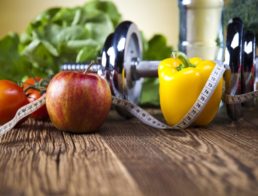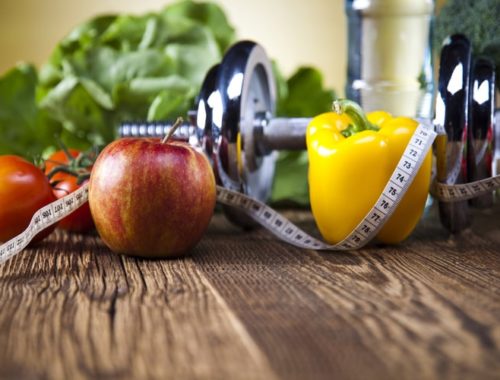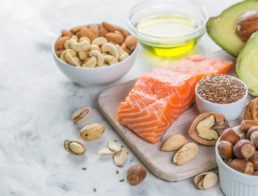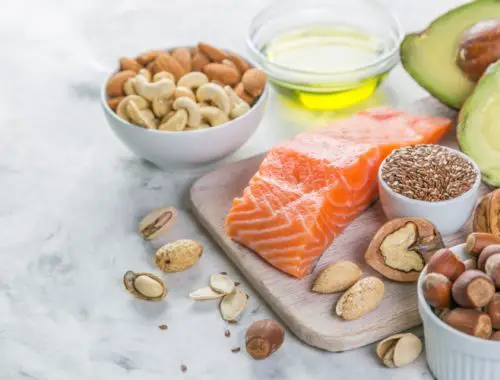While 40 might just be the new 30 in today’s modern world, it’s a physiological fact that your metabolism begins to slow down into your 30’s, and definitely after you turn 40. In your younger years, the diet and lifestyle that allowed you to stay lean might be packing on the pounds.
Don’t worry, there are plenty of steps you can take to increase metabolism after 40, and it doesn’t take as much effort as you might think.
Why Does My Metabolism Slow Down After 40?
The body’s metabolism refers to all processes by which your body burns calories and expends energy. And this doesn’t only mean time logged during exercise-the metabolism is hard at work 24/7 to maintain functions that are necessary for survival like breathing, blood circulation and cell maintenance and repair, among many others.
Your unique metabolic rate refers to how fast or slow your metabolism works, and is determined by various factors. Genetics certainly plays a role, but so does diet, lifestyle, toxicity, stress and more. Especially for women (but for men too) hormones also play a major role in weight gain and a slower metabolism after 40. Thankfully, the following twelve strategies can set the stage for a healthy metabolism as you approach 40, and speed up a slow metabolism if the damage has already been done.
1. Eat More Protein
Research shows that after the age of 70, it becomes extremely important to increase protein for most older adults. At 40 you’re a long way off, but it is important to keep in mind that slowly, lean muscle mass does begin to decrease and adequate protein is important to keep your metabolism functioning well.
Protein is the macronutrient with the highest thermic effect, meaning it raises your metabolism and causes the body to burn more calories. It also has a very high satiety factor, meaning it works to keep you full for longer and suppresses appetite. High quality protein sources include grass fed and organic meat and poultry, eggs, full-fat and plain dairy, nuts, seeds, whole grains and legumes.
Your perfect intake of protein depends on individual factors (genetics, activity level, health status and more) so you might consider working with a nutritionist to put together a personalized meal plan.
2. Start a Regular Strength Training Program
Unfortunately, many women live under the false assumption that weight training will make them bulky. Not only is this false, but missing out on strength training can seriously derail your metabolism. Muscle actually raises the body’s RMR (resting metabolic rate) meaning the more muscle you have, the more calories you’ll burn throughout your entire day, even at rest.
Whether you join a gym, find a yoga class, invest in some inexpensive home gym equipment or watch your favorite strength-based fitness videos online, shoot for 2-3 resistance workouts per week to maximize metabolism after 40.
3. Include More Variety in Your Diet
If you think of our ancient ancestors, most foods were not naturally available all year round. Nowadays this is far from the case, as we import foods from around the world and end up eating in a much different way than the human diet used to be. The problem with this is that, even in the case of healthy foods, overexposure to the same foods for long periods of time can set us up for food sensitivities and allergies. Particularly in the case of protein (but also with other foods), it’s important to vary your diet as much as possible.
After 40, many people are more likely to have more stress in their lives and depend on quick and easy food, or go-to options that often look the same day after day. Do your best to switch things up as often as possible, to both avoid potential food intolerances, and to take advantage of nutrients from a myriad of different foods.
To learn more about eating like our ancestors did, I’ve found this book to be really helpful.
4. Consider Food Allergies
On a similar note, food allergies and sensitivities are becoming more common in general, and add that to the high stress levels of most people in their 40s, you’ve got a recipe for a damaged metabolism. This reality is likely due to factors such as antibiotic overuse, increasing environmental and chemical toxins and additives in foods and diets high in processed foods, among other factors.
Reacting to foods you are intolerant too goes far beyond classic symptoms of digestive upset, and actually can have far-reaching impacts such as acne and other skin problems, joint pain, fatigue, migraines, inflammation and excess visceral fat (fat around the midsection). If you’re over 40 and have struggled with unexplained symptoms for awhile, consider doing food allergy testing or undergoing an at-home elimination diet to get to the root of your food intolerances, and boost your metabolism. Ideally work with a practitioner, but you can also buy at-home food intolerance tests, like this one.
5. Drink More Water
Think of adequate hydration as the foundation of all health. Your body’s cells and organs can’t function properly if they are dehydrated, and this only increases with age. Shoot for a minimum of half of your body weight (in pounds) in ounces of water daily. So for example, a 140 pound woman needs at least 70 ounces of water per day for a healthy metabolism.
6. Do Interval Training
Studies show that HIIT (high intensity interval training) not only supports a healthy metabolism after 40, but also decreases your likelihood of developing metabolic syndrome. HIIT might sound intimidating, but it can be easily adapted to every fitness level, and simply refers to switching between intervals of high and low exertion during exercise.
7. Try Intermittent Fasting
The strategy of intermittent fasting (IF) for weight loss and overall health is nothing new, and has been gaining more mainstream attention in recent years. IF simply means restraining from eating during certain hours of the day, instead of eating all day long. For example, you might go 16 hours without food (including hours you sleep) and 8 hours with food. One reason this probably helps to boost your metabolism after 40 isn’t just about taking in less calories (although that helps), but also allowing your insulin levels to decrease and cells to repair.
Go slowly, such as a 12:12 fast to begin. See how your body feels, and be sure the two meals per day that you do enjoy are packed full of fiber, nutrients, plenty of protein and healthy fats.
8. Decrease Alcohol Consumption
It probably comes as no surprise that alcohol and weight loss don’t go hand in hand. Being that alcohol is burned by the body as a primary fuel source, glucose from carbohydrates and fats become converted to adipose (fat) tissue, and weight gain usually ensues.
To support a faster metabolism after 40, cut back on the booze, and go for alcohols that are lower in sugar and calories. Better choices are vodka, whiskey, gin, mezcal, tequila and brandy over ice, or with some fresh lemon juice. Red wine in moderation also offers a small amount of antioxidants, so is a far better choice than beer and sugary cocktails.
9. Get More Sleep
Enough good quality sleep supports healthy stress and sex hormones, appetite and a seemingly endless list of factors that impact metabolism and weight. Shoot for 7-8 hours per night, and check out these 10 tips to fall asleep if you struggle with insomnia.
10. Look at Toxicity
Even with the healthiest of diets, the world we live in has become toxic. From toxins in the air and water to plastics and chemicals in home care products and cosmetics, most people can benefit from a simple detoxification program.
The word “detox” has become very trendy, and the popular fasts and juice cleanses on the market these days will often cause more harm than good. Instead, support your liver and other detox organs and processes with a diet of whole, real foods from nature, an elimination of sugar and alcohol and a healthy dose of self-care for a few weeks.
11. Manage Stress
Chronic stress can wreak havoc on your metabolism, especially after 40. High stress levels increases your body’s output of cortisol, the main stress hormone. Excessive cortisol over time can lead to obesity, cardiovascular disease, diabetes and many other chronic diseases, and might just be the number one metabolic offender.
Effective stress management depends on what truly works for your body, lifestyle and preferences. Whether it be yoga, meditation, a dance class, time with friends or a walk outside each day, find small ways to incorporate relaxing and rejuvenating activities every week.
12. Heal Your Gut
Fascinating research has come to light over recent years showing the profound connection between the gut microbiome and metabolism. More studies are certainly needed and there is still much to discover, but we do know that healthy and balanced gut bacteria is necessary for a healthy metabolism. Support your gut by eating a plethora of fiber-rich vegetables and fruits, incorporate fermented foods daily like plain yogurt, kefir, raw sauerkraut, kimchi or kombucha tea, and consider taking a high quality probiotic supplement. Check out this article to learn how to take probiotics for optimal health.
Make your 40s the best and most energized time of your life by adopting these metabolism-boosting strategies. Better yet, set yourself up for success by starting these healthy habits at any age.









